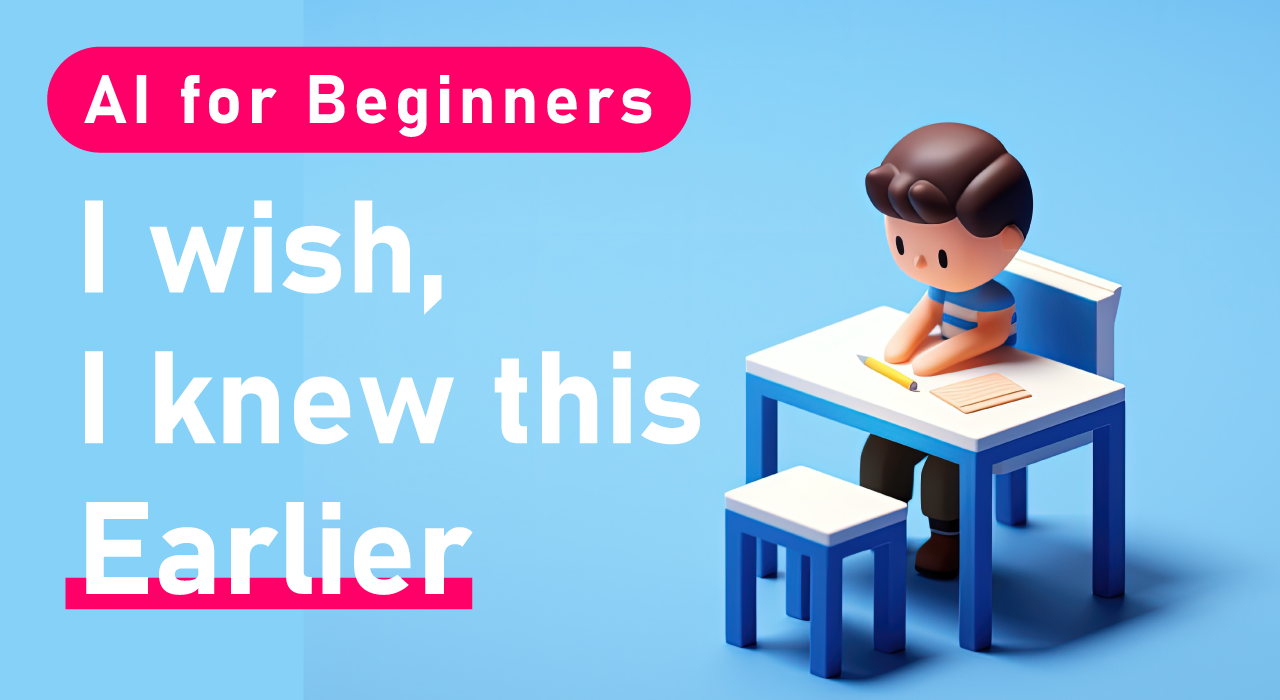
Artificial Intelligence (AI) is no longer a futuristic concept — it's a tool that’s already transforming how we work, think, and create. Whether you’re a designer, writer, entrepreneur, or just curious, AI can help you save time, spark creativity, and unlock new possibilities. But if you’re a beginner, jumping into the AI world can feel overwhelming.
This guide walks you through the three key steps to get started with AI the right way:
Let’s break it down step by step.
Before you start using AI, you need to pick a tool that matches your goals. With hundreds of AI tools out there — from text generators to image creators — it’s important to choose one that’s right for your job, budget, and skill level.
Start by asking yourself:
Examples:
Once you narrow it down to a few tools, compare them using these factors:
Here’s a quick list of AI tools suited for different roles:
Start with a free plan and explore before committing to a paid tool.
Having the right AI tool is great — but without a plan, it’s easy to waste time and get frustrated.
You need to define your goal and reverse-engineer how AI can help you get there.
Ask yourself:
What do I want to produce or solve with AI?
Examples:
Be specific. The clearer your goal, the better your AI experience will be.
Now break down how to get there using AI:
Example goal: Write a blog post
This method ensures you use AI as a collaborator, not a magic button.
Don’t try to automate your whole workflow on day one. Start with a single, repeatable task — like generating social media captions, replying to emails, or brainstorming ideas.
As you build confidence, you’ll naturally explore more advanced tasks.

Grammarly is an AI-powered writing assistant that helps improve grammar, spelling, punctuation, and style in text.

Notion is an all-in-one workspace and AI-powered note-taking app that helps users create, manage, and collaborate on various types of content.
Prompting is the key to unlocking AI’s true power. The better your prompt, the better the result — plain and simple.
Think of a prompt as giving instructions to a very smart assistant who has no idea what you want until you tell it clearly.
Let’s break it down so that even a complete beginner can start strong.
A great prompt has 4 core elements. This structure helps you get more relevant, useful results from almost any AI model (like ChatGPT, Claude, Gemini, etc.):
Let’s walk through it step by step:
🧠 Input Prompt:
You are a social media expert. Write 5 Instagram captions promoting a new productivity app. The tone should be energetic and helpful. Each caption should be under 150 characters.
💡 Result Output (example):
Notice how specific and focused the output is because the prompt was well structured.
AI responds well to clear boundaries or stylistic instructions.
Examples of Prompt Enhancements:
Here are more ready-to-use prompt templates for beginners in different contexts:
You are a content strategist. Create a detailed outline for a blog post titled “Top 5 AI Tools for Freelancers in 2025.” The tone should be informative and friendly.
You are a branding expert. Suggest 5 creative brand name and logo ideas for a wellness startup targeting Gen Z women. Keep them modern and minimalistic.
Write 3 variations of ad copy for a new eco-friendly water bottle. Keep it short, engaging, and suitable for Instagram ads. Mention “BPA-free” and “sustainable.”
You are a customer support agent. Write a friendly reply to a customer asking about a delayed shipping order. Apologize and offer a 10% discount as a courtesy.
Create a comparison table of the top 3 AI writing tools: ChatGPT, Jasper, and Copy.ai. Include columns for pricing, use cases, ease of use, and main features.
The first result is not always perfect — but AI improves dramatically when you refine your prompts based on what you see.
Example Dialogue:
You: Write a product description for a smart lamp.
AI: (Returns a very technical answer)
You: Rewrite it in a more casual tone for Instagram.
AI: (More friendly now)
You: Add emojis and a call to action at the end.
AI: (Even better!)
This process is called prompt chaining — refining results by giving follow-up instructions. You don’t need to write the perfect prompt in one go. Use conversation.
Imagine you’re directing a movie scene. You wouldn’t say, “Make it good.” You’d describe the mood, camera angle, lighting, actors, and actions.
That’s how you should prompt AI.
Starting with AI doesn’t have to be overwhelming. The key is to:
The more you experiment, the more confident you’ll become. Remember, AI doesn’t replace your skills — it amplifies them. Start small, stay curious, and build your own AI workflow one step at a time.

